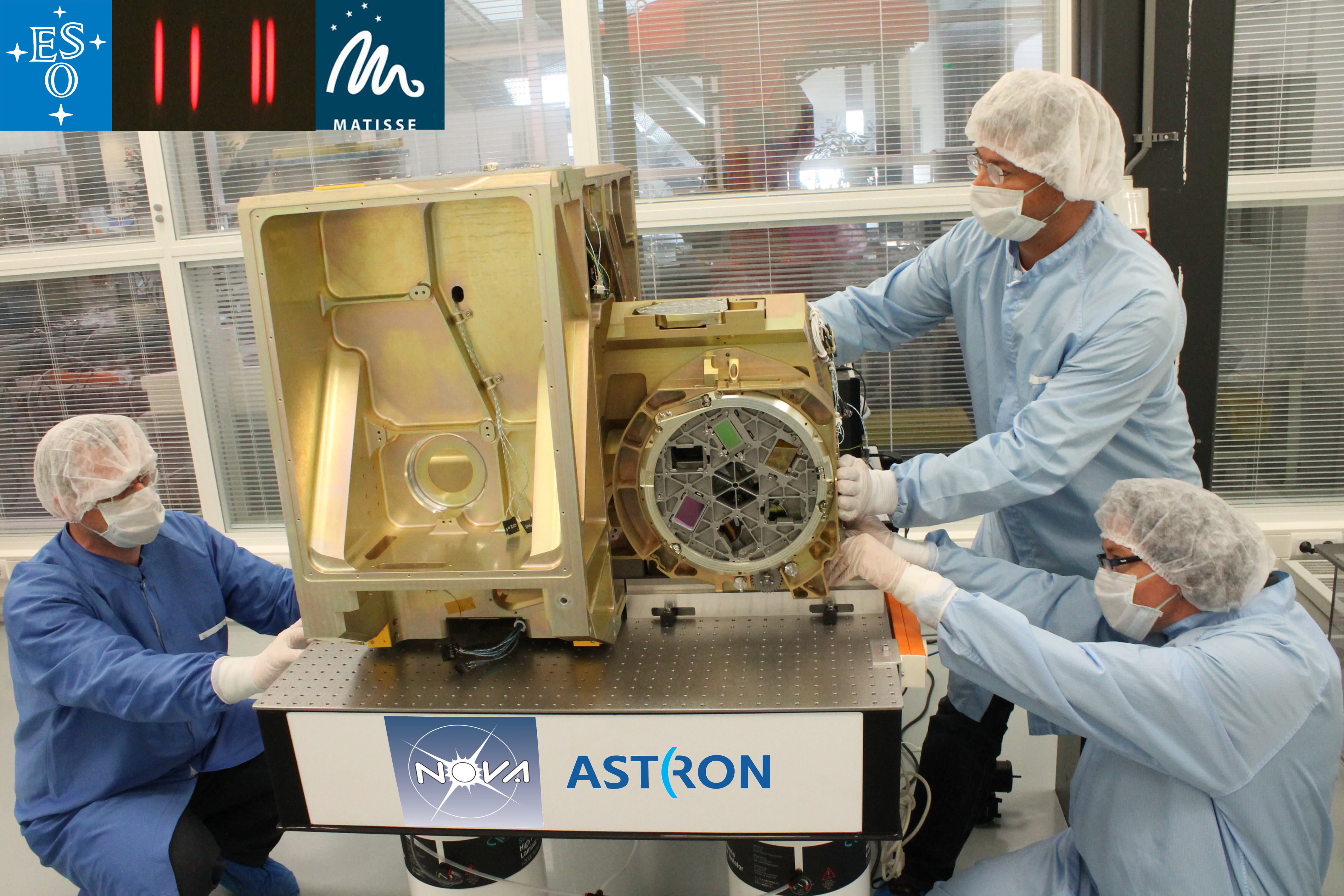Daily Image
07-10-2013MATISSE first light in the NOVA-ASTRON clean room
| Submitter: | Ramon Navarro |
| Description: | Today we celebrate the completion of the integration of the MATISSE N-band cold optics bench. This is a major milestone for the MATISSE project. This day marks the end of more than four years of concept creation, technology development, detailed design, fabrication and integration. First light in the NOVA-ASTRON cleanroom was reached last week. At this moment the test team takes over. MATISSE is the mid-infrared interferometric spectrograph and imager for ESO's VLT interferometer (VLTI) at Paranal, Chile. Matisse can combine the light from all 4 eight-meter VLT telescopes. MATISSE is capable of imaging at spatial resolutions of ~6 milli-arcsec in the 2.8-5 and 8-13 micrometer wavelength range. This enables the study of wavelength-dependent characteristics of gas and dust grains. This includes the formation and evolution of planetary systems, Active Galactic Nuclei and high-contrast environment of evolved stars. In this picture you can see the moment of integration of the combined Beam Shaper Box and Filter Wheel Box into the Cold Optics Bench. The wheel that is clearly visible is the dispersion wheel containing several prisms and a grism. Behind this wheel there are two more wheels with polarization filters and spectral filters. The Cold Optics Bench also contains about 100 optical components for shaping the light from the telescopes in a special way. In the insert at the upper left you can see the first light image: 4 elongated red spots representing the pupils from the 4 VLT telescopes. Because of this special configuration in the pupil plane, a single interferogram is created in the image plane, that allows simultaneous detection of all the baselines between the VLT telescopes and hence phase closure. This image is taken before fine alignment. The empty gold colored area on the left is now filled with a technical camera and CCD for optical performance tests. In the near future this will be replaced by an infrared camera and Focal Plane Array (detector), electronics and cooling equipment. The operating temperatures are 8 Kelvin for the FPA, 20K for the camera and 38K for the rest of the cold optics. In a few weeks the integrated M-band Cold Optics Bench is shipped to MPIA in Heidelberg for cryogenic performance test. Early 2014 also the LM-band Cold Optics Bench will be shipped there. Then everything will be integrated with the warm feeding optics at OCA in Nice. Finally the integration with the VLTI at Paranal, Chile, is planned for early 2015. |
| Copyright: | Ramon Navarro |
| Tweet |  |
